
| Apollo Jewel LUCIINI, THECLINAE, LYCAENIDAE, PAPILIONOIDEA | (donherbisonevans@yahoo.com) and Stella Crossley |
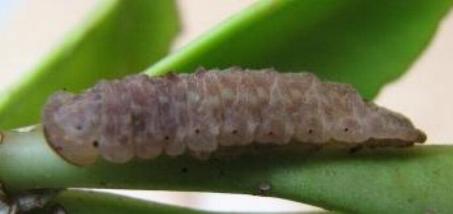
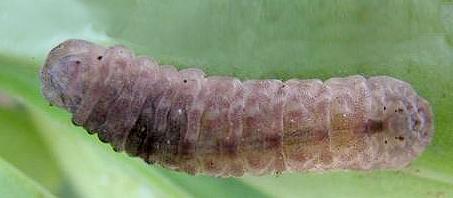
(Photos: courtesy of Bob Miller and Ian Hill)

| Apollo Jewel LUCIINI, THECLINAE, LYCAENIDAE, PAPILIONOIDEA | (donherbisonevans@yahoo.com) and Stella Crossley |


(Photos: courtesy of Bob Miller and Ian Hill)
The Caterpillars of this species are mottled brown, and live in hollows in the bulbs of various species of Ant Plant :
which are epiphytes on various coastal trees, particularly:
The caterpillars feed on the interior tissues in the bulb in which it lives, and nocturnally emerges to feed also on the foliage. Its exit hole in its home bulb becomes surround by frass, which is a useful guide to discovering a caterpillar. The same galleries in the plant bulb house a nest of some species of ants, including :
Only one caterpillar appears to live in any one plant. The ants and the caterpillar seem to ignore each other, the caterpillar apparently feeding on the plant tissues. However, some observers believe that the Caterpillar feeds on the ant larvae, and some believe that the ants farm the Caterpillar.
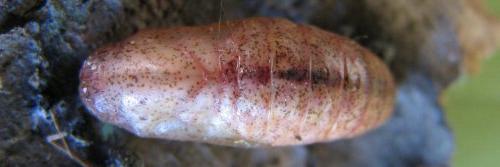

(Photos: courtesy of Bob Miller and Ian Hill)
The caterpillar pupates in its gallery. The pupa is speckled brown, with a length of about 2 cms.


The adult butterflies are bright orange, with black edges to the wings. The female has larger areas of black than the male.
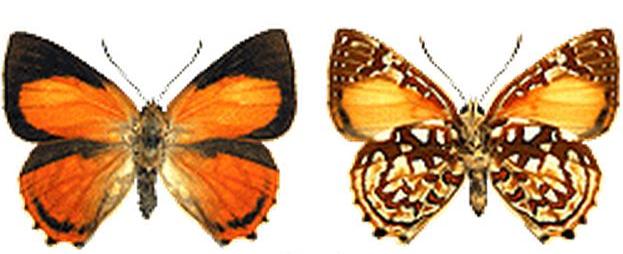
The undersides of the wings are pale orange with cream, black, and darker orange spots edged in iridescent blue. The wingspan is about 3.5 cms.
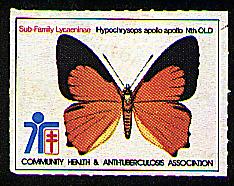
This species is considered to be endangered. Its occurrence is confined to
and two areas of the north-east coast of Australia in Queensland as the subspecies:
Further reading :
Michael F. Braby,
Butterflies of Australia,
CSIRO Publishing, Melbourne 2000, vol. 2, pp. 651-652.
William Henry Miskin,
Synonymical catalogue of the Lepidoptera Rhopalocera (Butterflies) of Australia,
with full bibliographical reference; including descriptions of some new species,
Annals of the Queensland Museum,
Volume 1 (1891), p. 85.
John T. Moss,
The intriguing Apollo Jewel butterfly (Hypochrysops apollo Miskin, 1891);
its remarkable hostplants and ant associations,
Butterflies and Other Invertebrates Club,
Metamorphosis Australia,
Issue 74 (September 2014), pp. 4-9.
 caterpillar |  butterflies |  Lepidoptera |  moths |  caterpillar |
(updated 9 December 2009, 20 November 2025)